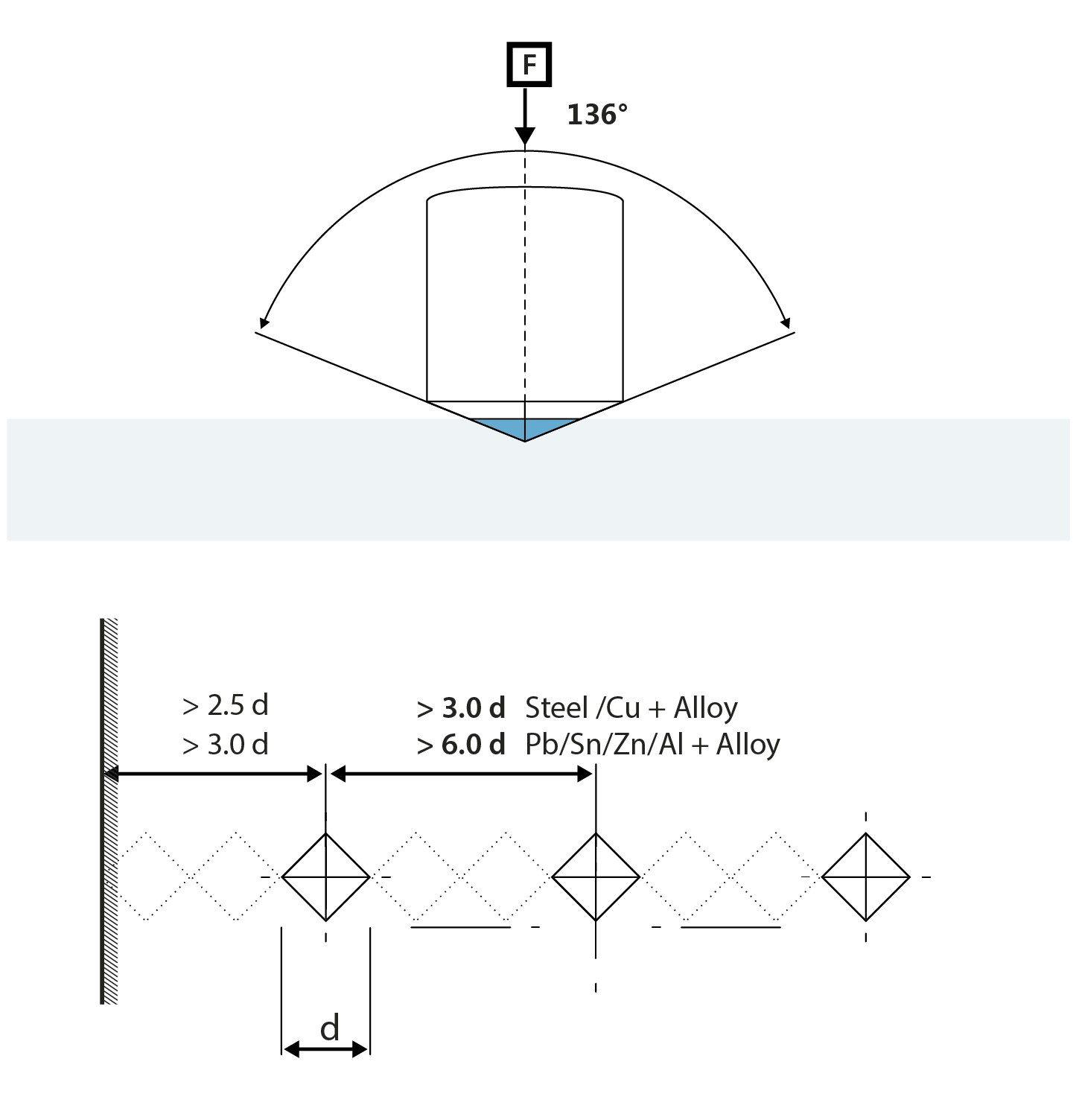The Vickers hardness tester uses the hardness test that was developed in 1924 by Smith and Sandland at Vickers Ltd as an alternative to the Brinell method to measure the hardness of materials. The Vickers test is often easier to use than other hardness tests, since the required calculations are independent of the size of the indenter, and the indenter can be used for all materials irrespective of hardness.
The basic measuring principle of the Vickers hardness tester, as with all common measures of hardness, is to observe the questioned material’s ability to resist plastic deformation from a standard source. The Vickers hardness tester can be used for all metals and has one of the widest scales among hardness tests. The unit of hardness given by the test is known as the Vickers Pyramid Number (HV) or Diamond Pyramid Hardness (DPH).
The indenter shape of a Vickers hardness tester should be capable of producing geometrically similar impressions, irrespective of size; the impression should have well-defined points of measurement; and the indenter should have high resistance to self-deformation. A diamond in the form of a square-based pyramid satisfied these conditions.
Vickers hardness numbers are reported as xxxHVyy, e.g. 440HV30,
or xxxHVyy/zz if duration of force differs from 10s to 15s, e.g. 440Hv30/20, where:
440 is the hardness number,
HV gives the hardness scale (Vickers),
30 indicates the load used in kg.
20 indicates the loading time if it differs from 10s to 15s
Source: Wikipedia
Vickers values are generally independent of the test force, although from 500gf to 50Kgf it is possible the results of the same material under test may produce similar results irrespective of the force used. Vickers hardness tests have been found to be very useful for material evaluation, quality control of manufacturing process and research and development efforts. Hardness, although empirical in nature, can be correlated to tensile strength for many metals and is an indicator of wear resistance and ductility. When doing a Vickers hardness test the distance between indentations must be more than 3 indentation diameters apart to avoid interaction between the work-hardened regions. Vickers hardness testers are routinely used for testing materials, components in the aerospace and automotive industry, laboratories for sample evaluation, to conduct common or advanced testing tasks.
Do you have any questions or would you like to receive more information about the Vickers hardness tester or other hardness testers, such as the Rockwell or Knoop? Please contact our specialists, they would be happy to help you.
